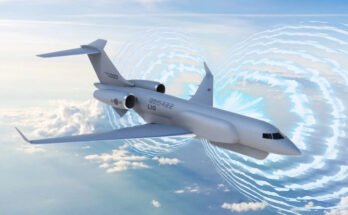by Dan Darling, International Military Markets Analyst, Forecast International.
A dormant joint project between Russia and India for the development of a fifth-generation fighter aircraft (FGFA) once again has a new lease on life as the Indian Defense Ministry seeks to move forward on negotiations with Moscow. The FGFA project – code-named Project 79L inside India’s Defense Ministry – forms one part of India’s multistep strategy to modernize and strengthen its diminishing combat aircraft capability.
The larger “Action Plan” aims to stop the decline in Indian Air Force capacity, which is now down to just 33 fighter squadrons of varying operational capability and availability – far short of Indian security policy strategic goals of being able to offset a hypothetical combined China-Pakistan direct threat.
The near-term requirement is for the IAF to field 42 fighter squadrons of 16 to 18 aircraft apiece by 2022, which altogether would comprise some 700+ combat aircraft. The longer-term goal is for the fielding of 810 fighters in 45 squadrons by 2032. India is currently far short of these aspirations, with the IAF legacy fleets of MiG-21 (nine squadrons) and MiG-27 (two squadrons) fighters being phased out of service in a gradual retirement that will run through 2024 at the latest. Added to these pressures have been serviceability issues with the growing IAF fleet of Sukhoi Su-30MKIs.
Bureaucratic inertia and ever-changing project requirements and industrial demands have mired many modernization/upgrade projects in the muck of India’s ever-present defense procurement bog. Ambitious projects such as the now-defunct $12 billion Medium Multi-Role Combat Aircraft (MMRCA) program – dubbed the Deal of the Century and involving 126 new-build fighters – are drawn up and eventually crumble over industrial offset or technical details, are damaged by economic or currency swings, or involve allegations of corruption that scuttle the procurement.
Confronted with the mathematical realities, India’s NDA coalition government of Prime Minister Narendra Modi now has little choice but to jump-start the faltering IAF fighter modernization process.
The aforementioned multipronged strategy involves a five – possibly even six – step Action Plan.
The first step, involving the upgrade of 63 MiG-29 and 51 Mirage 2000 IAF fighters, has proven slow-going, but will extend the service lives of these aircraft by 10 to 15 years.
The second step has proven a precarious one. This involves the induction of 120 indigenous Light Combat Aircraft – Tejas fighters – by 2026. The Tejas, which fills the low-end fighter requirement for the IAF, is intended to replace the badly aging MiG-21s. However, the program, started in the 1980s by the government of then-Prime Minister Indira Gandhi, has suffered numerous delays. Although the Modi government made a big production of standing up the first Tejas LCA squadron on June 30 (the Flying Daggers 45), this involved a mere two fighters. The first full squadron will not be ready until 2018 – and even then will arrive in an Initial Operational Clearance (IOC) state.
The third step covers the already-in-progress induction of the full complement of 272 Sukhoi Su-30MKIs by 2018-2019 (224 have entered service so far). The Su-30 fleet has been particularly vexing for India, as past performance issues (six Su-30s have crashed) and technical concerns with the aircraft’s Saturn AL-31FP engines resulted in extremely poor serviceability rates that dipped as low as 46 percent in the past. However, Defense Minister Manohar Parrikar has reported that improvements have brought serviceability rates up to near 60 percent, with the ultimate aim being 75 percent serviceability at any one time.
The Su-30MKI Flying Lancers form the near-term backbone of the IAF combat capability, therefore prompting defense policymakers to consider a fleet-wide upgrade that would result in a “Super Sukhoi” capability. This upgrade would involve equipping the jets with advanced active electronically scanned array (AESA) radars and long-range standoff missiles. The Indian Defense Ministry hopes to finalize the technical requirements for the upgrade program before year-end, with a contract then signed with Russia in 2017.
Meanwhile, a deal in the ongoing negotiations with France over the direct government-to-government purchase of 36 Rafale fighters in fly-away condition is reportedly close. Of course, public statements of the nearness of such a finalized deal have been the norm ever since the Rafale was downselected as the winning bidder in the MMRCA project in January 2012. However, the significantly scaled-down Rafale requirement offers negotiators on both sides easier terrain to navigate than that of the former MMRCA tender. India intends to procure these 36 fighters at an estimated cost of $8 billion, which would include all accompanying weaponry and electronics.
The hope in IAF circles is for the new Rafales to be inducted into service starting in 2019.
However, while the Rafale will be a step up in IAF capability, the procurement of a mere 36 units does little to plug an ever-growing fighter capacity gap.
This is where the FGFA project with Russia comes into play.
The IAF hopes to acquire 127 single-seat fighters, with initial induction starting in 2022. The timeframe may prove ambitious and the scale of the procurement significantly downsized from the original 214-unit requirement outlined, but the project would – if carried through – provide both a crucial capability and capacity boost to the IAF.
The FGFA project dates back to October 2007, when India and Russia first signed an Inter-Governmental Agreement exempting the program from normal procurement rules. A collaborative preliminary design contract worth $295 million was then signed between the two countries in December 2010. But although the preliminary design of Russia’s nascent fifth-generation fighter, the PAK FA, wrapped up in mid-2013, by early 2014 it was clear that the joint collaboration project was foundering for reasons involving cost and engine concerns (in the eyes of the IAF) and insufficient local work share (from HAL’s perspective).
Nonetheless, the Indian government sought to fast-track the final research and development contract signing, even loosening some of its earlier requirements in order to quicken the process. Now, after years of back-and-forth cost negotiations, the two sides are reportedly close to inking the deal before the year is out. Under the main design contract, each side will provide $4 billion toward prototype development, testing, and overall infrastructure buildup (production and assembly lines, storage and support facilities, etc.).
The estimated price tag for India to procure the 127 new FGFAs is a whopping $25 billion.
Positive movement on all of these different elements would still leave India with under 700 fighters – enough to outfit the requisite 42 squadrons at 16 fighters apiece, but with zero margin capacity-wise for service issues, temporary withdrawals for upgrades, etc.
Therefore, the Modi government is exploring the possibility of setting up a second localized fighter production line under a proposed “Make in India” combat aircraft project.
This program appears to be a scaled-down version of the abandoned MMRCA program, the ambitions of which outstripped the political-industrial realities. No firm figure has been provided regarding the number of fighters to be ordered, but with the Tejas line producing 120 aircraft for the IAF it might be logical to conclude that India would look to order between 50 and 90 units, or enough to provide three to five more fighter squadrons while providing the vendor with economies of scale to set up joint production with a local Indian partner.
Competing platforms reportedly include the Boeing F/A-18 Super Hornet, the Dassault Rafale, the Eurofighter Typhoon, the Lockheed Martin F-16, and the Swedish Saab Gripen E.
Both Sweden and the U.S. have been particularly aggressive in promoting their hardware and potential partnership on the project with India. A July 11 report in The Hindu BusinessLine indicated that Lockheed Martin has finalized a multibillion-dollar deal to manufacture the F-16 Block 70/72 exclusively in India in collaboration with Tata Advanced Systems. The F-16 arrangement would be conducted under the U.S. government-to-government Foreign Military Sales (FMS) mechanism.
But, for now, the second local fighter production line –never mind any report regarding the advanced F-16 variant being built in India – remains in the planning stage. Any such arrangement would likely take years to firm up, let alone roll series-production fighters off assembly lines.
Therefore, the Modi government needs to push through the first five steps on its Action Plan posthaste if it wants to ensure that the IAF’s fighter strength does not fall precipitously.
Please feel free to use this content with Forecast International and analyst attributions, along with a link to the article. Contact Ray Peterson at +1 (203) 426-0800 or via email at ray.peterson@forecast1.com for additional analysis.
The Forecast International International Military Markets series examines the military capabilities, equipment requirements, and force structures inventories of 140 countries, with corresponding coverage of the political and economic trends shaping the defense market outlook for individual countries and regions.
For 50 years, Forecast International intelligence reports have been the aerospace and defense industry standard for accurate research, analysis, and projections. Our experienced analysts compile, evaluate, and present accurate data for decision makers. FI's market research reports offer concise analysis of individual programs and identify market opportunities. Each report includes a program overview, detailed statistics, recent developments and a competitive analysis, culminating in production forecasts spanning 10 or 15 years. Let our market intelligence reports be a key part of reducing uncertainties and mastering your specific market and its growth potential. Find out more at www.forecastinternational.com



